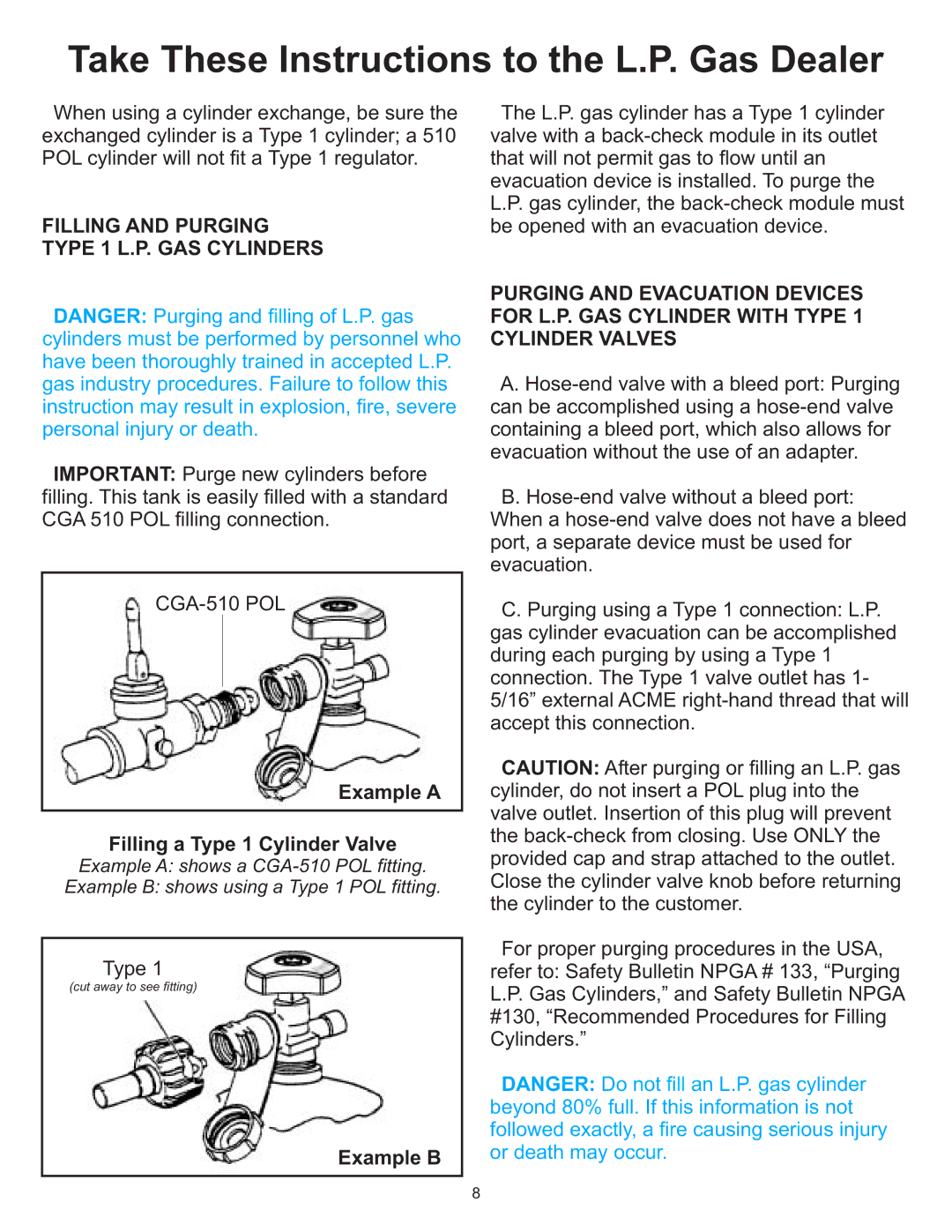
Take These Instructions to the L.P. Gas Dealer
When using a cylinder exchange, be sure the exchanged cylinder is a Type 1 cylinder; a 510 POL cylinder will not fit a Type 1 regulator.
FILLING AND PURGING
TYPE 1 L.P. GAS CYLINDERS
DANGER: Purging and filling of L.P. gas cylinders must be performed by personnel who have been thoroughly trained in accepted L.P. gas industry procedures. Failure to follow this instruction may result in explosion, fire, severe personal injury or death.
IMPORTANT: Purge new cylinders before filling. This tank is easily filled with a standard CGA 510 POL filling connection.
Example A
Filling a Type 1 Cylinder Valve
Example A: shows a
Type 1
(cut away to see fitting)
Example B
The L.P. gas cylinder has a Type 1 cylinder valve with a
PURGING AND EVACUATION DEVICES FOR L.P. GAS CYLINDER WITH TYPE 1 CYLINDER VALVES
A.
B.
C. Purging using a Type 1 connection: L.P. gas cylinder evacuation can be accomplished during each purging by using a Type 1 connection. The Type 1 valve outlet has 1- 5/16” external ACME
CAUTION: After purging or filling an L.P. gas cylinder, do not insert a POL plug into the valve outlet. Insertion of this plug will prevent the
For proper purging procedures in the USA, refer to: Safety Bulletin NPGA # 133, “Purging L.P. Gas Cylinders,” and Safety Bulletin NPGA #130, “Recommended Procedures for Filling Cylinders.”
DANGER: Do not fill an L.P. gas cylinder beyond 80% full. If this information is not followed exactly, a fire causing serious injury or death may occur.
8
